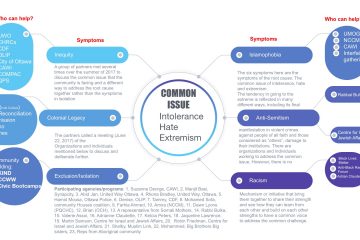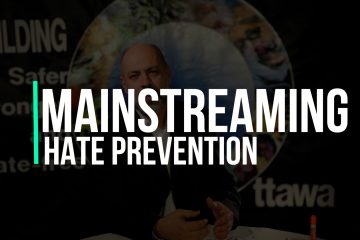The forgotten factor In Preventing Hate, Crime and Violence
Abid Ullah Jan
One of the interesting questions is: how do we know that nurturing our spiritual self is key to staying away from hate, crime and extremist tendencies?
To answer this question, we need to look into credible academic research first to see the impact of mere involvement with religion on crime in general, and then deduct how profound the impact will be will be when a systematic approach is adopted to inspiring spiritualism and putting individuals on the right path to achieving human excellence.
Richard Freeman1 at Harvard University conducted a study in 1986 which was particularly helpful in turning our attention to religion as a factor helping at-risk youth become resilient youth — youth who stay out of trouble despite living in the neighbourhoods where crime occurs all around them and even though there was no specific content or delivered to those you.
Freeman found that mere frequent church attendance was enough to improve academic performance and positive employment indicators.
Byron Johnson took it one step further. He conducted an objective and most exhaustive review to date of the 272 studies on religion and crime – utilising vastly different methods, samples, and research designs – published between 1944 and 2010. The conclusions are:
– The more one is involved in religious activities, the less likely one will be involved in criminal acts. Remember, This is about mere involvement – not specifically targeted courses and content to prevent crime or extremism.
– 90 percent of the studies (247 out of 272) report an inverse or beneficial relationship between religion and some measure of crime or delinquency. That means increasing religiosity is associated with decreasing crime or delinquency.
– The frequency of attending religious services significantly lowers the likelihood that young black males living in poverty would commit illegal activities, use drugs, or be involved in drug selling.
– The probability of committing a non-drug crime was reduced by 39 percent for youth who just attended church more than once a week compared to youth who did not attend church.
– The probability of drug use decreased by 46 percent for those who attended church.
– The probability of youth selling drugs was reduced by 57 percent when comparing regular church attendees to non-attendees.
– Many of the resilient youth came from households headed by only one parent—a factor that otherwise increases the likelihood of criminal activity.
– Active participation in a church appears to play a critical protective role in fostering social control and making youth resilient to the negative influences of living in disadvantaged environments.
These highlights from the review of 272 studies over 66 years would show overwhelming empirical evidence of an inverse relationship between increased spirituality and crime – even if the content were not prepared and delivered with crime prevention objectives.
The impact substantially increases when select spiritual content is combined with scientific evidence and information and delivered with clear objectives of addressing hate and violence in mind, as we have demonstrated at PeaceQuest.
The spiritual factor matters in meaningful ways for hate, violence, and crime prevention. Unfortunately, this has been the least applied approach in the sphere of preventative work for several reasons, mainly because of:
- The bias toward religion-based organisations/approaches that prevent funders from funding and scholars from studying such efforts;
- The capacity of the religious organisations to undertake organised efforts of developing and delivering content consistently;
- The absence of encouragement, motivation or constructive criticism in media about the role of religious organisations that leads to the status quo, and
- The complete absence of collaboration and coordination between eh faith and social services sectors that is a barrier to leveraging resources and offering creative/preventative programming.
I will slightly touch upon point 2 mentioned above. Most Muslim organisations are mainly focused on constructing multi-million dollar facilities with all the tell-tale signs of no focus on faith-based approaches to addressing more significant societal problems of hate, violence and extremism.
The major signs of this lack of focus are the complete absence of office space and investment in human resources to undertake such work.
The total absence of organisational structures, separating management from governance, is a vast capacity gap that exacerbates the function of some Muslim entities that are run by a few volunteers who entrench themselves for life and close doors to any meaningful community participation, inclusion, creative programming and social innovation.
~*~*~*~*~
[1] Freeman, Richard B. 1986. Who escapes? The relation of churchgoing and other background factors to the socioeconomic performance of black male youth from inner-city tracts. In The Black Youth Employment Crisis, ed. Richard B. Freeman, Harry J. Holzer. Chicago: University of Chicago Press, 353–76.






















